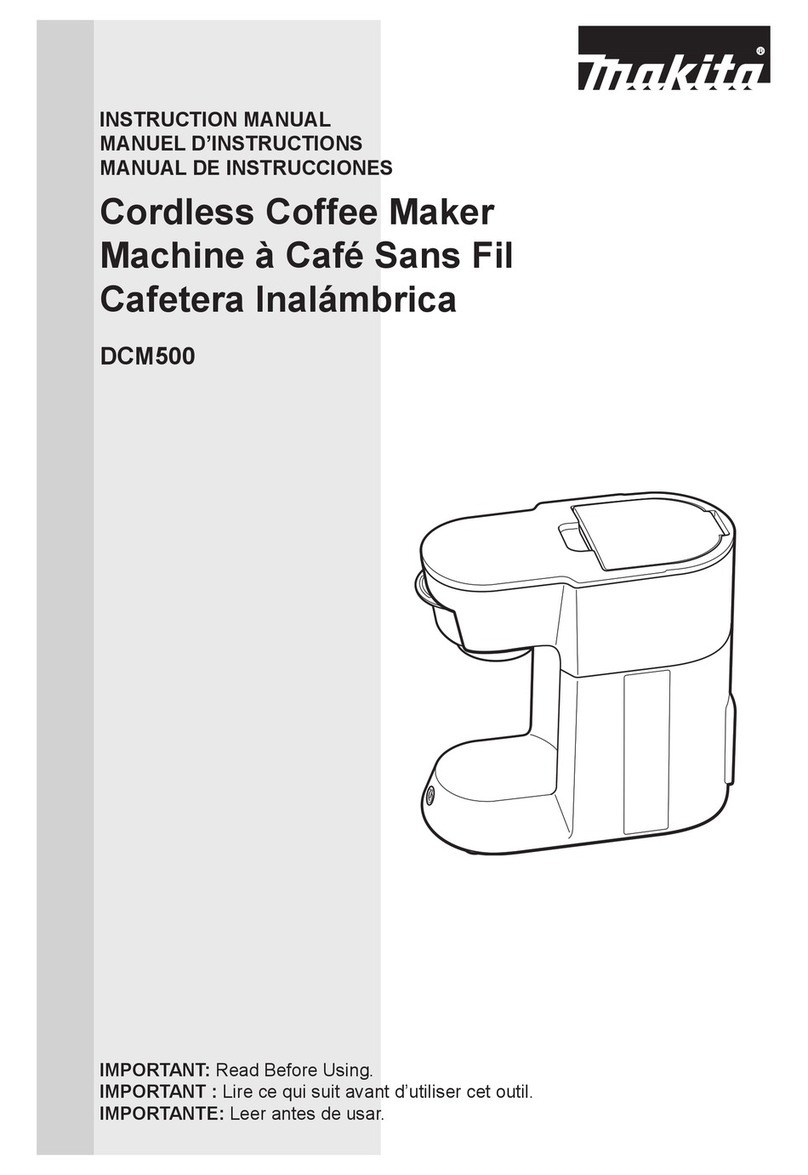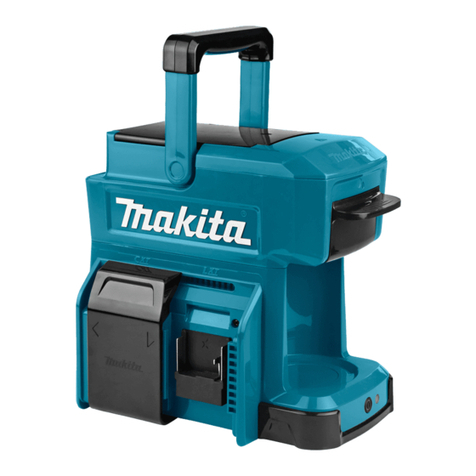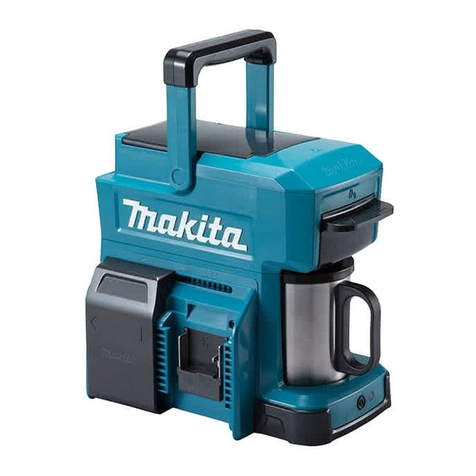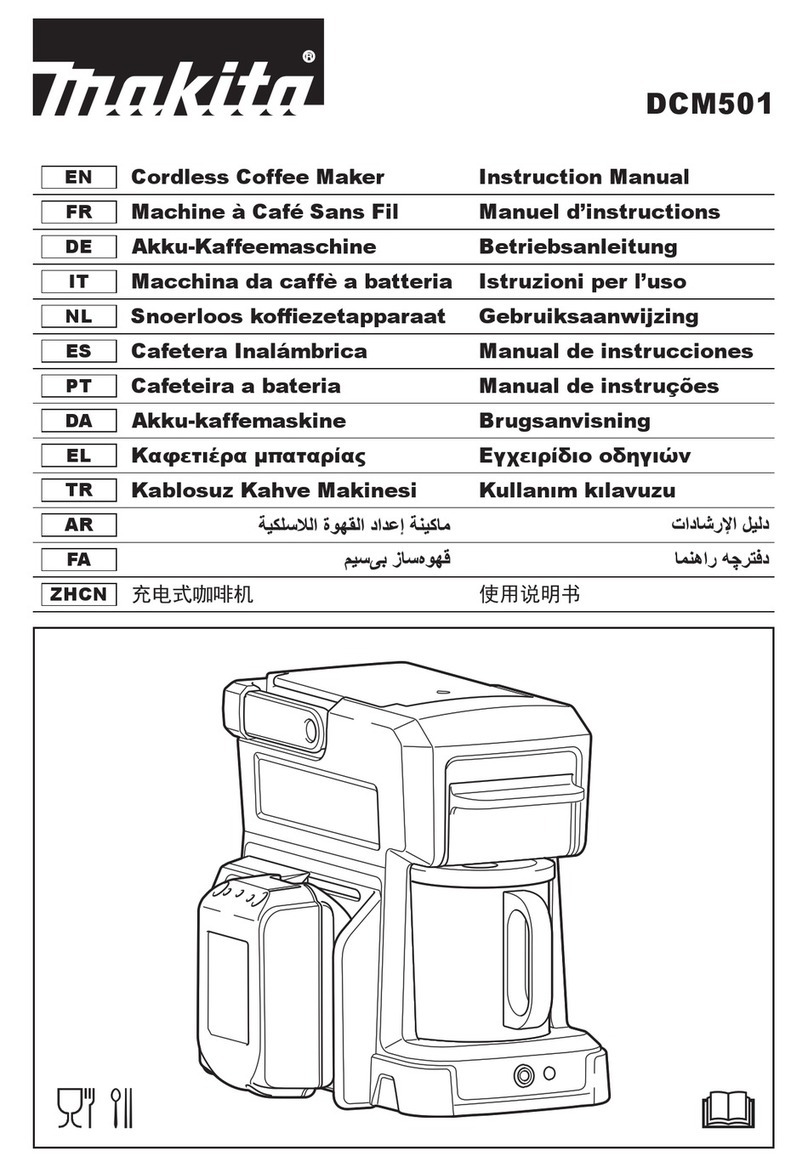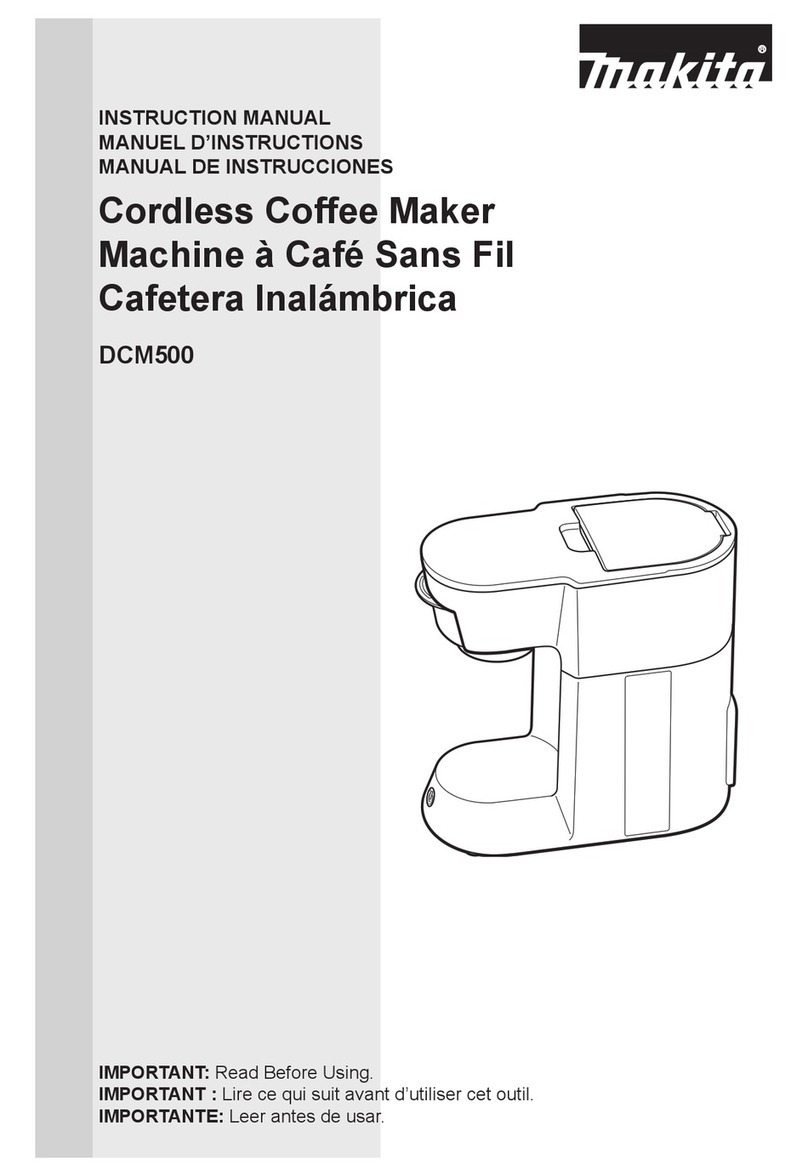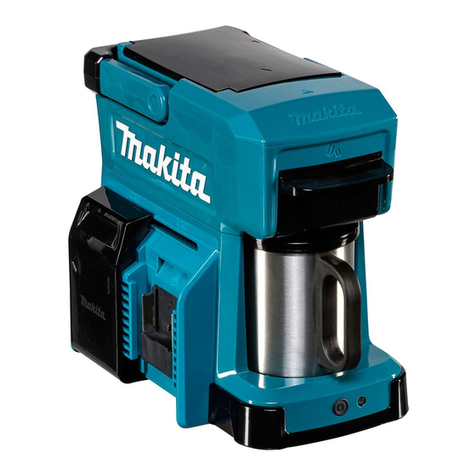8
BREWING
fresh cold water.
Pour water until the “LIMIT” island (Fig. F-17) just
sinks.
NOTE
Do not pour in too much water, or water may run out
from the appliance, put 6.5 gram of ground coffee
NOTE
correctly.
Adjust the amount of ground coffee to your
preference.
Place a cup on the cup rest (Fig. C-9).
The power switch lights up and the brewing cycle
begins.
When the brewing cycle has ended, the appliance
automatically turns off and the power switch light
goes off.
NOTE
The appliance turns off and the power switch light goes
off.
With AC operation, a brewing cycle takes approx. 3
minutes, while with battery operation, it takes approx. 7
minutes (the cycle time varies depending on the amount
of water, temperature, and other conditions). The longer
the brewing cycle, the stronger the coffee.
CAUTION
holder (Fig. C-8) during the brewing cycle.
When the brewing section marked with
steaming, do not touch it.
Do not touch the bottom plate (Fig. C-11) during the
brewing cycle.
After the brewing cycle completes, wait at least 5
If another brewing cycle is to be started, wait at least
5 minutes before pouring in cold water. Otherwise,
steam and hot water could be released and scalding
may result.
1.
•
2.
•
•
3.
4.
•
•
•
•
•
•
•
•
CLEANING
Proper maintenance will ensure years of service for
your appliance. Clean the appliance after every use to
WARNING
Do not immerse the appliance, AC power cord, or
battery holder in water or other liquids.
Unplug the AC power cord/battery holder from the
appliance and allow the appliance to cool.
Wipe the exterior with a soft cloth moistened with
water.
NOTE
• Do not use abrasive cleansers or scouring pads.
from the appliance, wash them in hot, soapy water,
and then rinse them with hot water.
Allow the appliance and all parts to dry completely.
NOTE
Do not dry the inside of the water tank (Fig. C-6) with a
cloth, as lint may remain.
STORAGE
down completely before you store it.
Do not store the discharged battery for long periods, as
it can shorten its service life.
To maintain product SAFETY and RELIABILITY,
repairs, any other maintenance or adjustment should
be performed by Makita Authorized Service Centers,
always using Makita replacement parts.
MAINTENANCE
WARNING
When servicing is required, ask a Makita authorized
service center which deals genuine replacement parts.
Use of any other parts may create a hazard or cause
product damage.
WARNING
To avoid serious personal injury, always remove the
AC power cord or battery cartridge from the unit when
cleaning or performing any maintenance.
GENERAL MAINTENANCE
Never use gasoline, benzine, thinner, alcohol or the like
when cleaning plastic parts. Discoloration, deformation
or cracks may result. After appliance cooled, use clean
clothes to remove dirt, dust, oil, grease etc.
OPTIONAL ACCESSORY
CAUTION
These accessories or attachments are recommended
The use of any other accessories or attachments might
present a risk of injury to persons. Only use accessory
or attachment for its stated purpose.
If you need any assistance for more details regarding
these accessories, ask your local Makita Service Center.
Makita genuine battery and charger
NOTE
Some items in the list may be included in the appliance
package as standard accessories. They may differ from
country to country.
•
1.
2.
3.
4.
•
•
•
•
•
•
•
•
•
